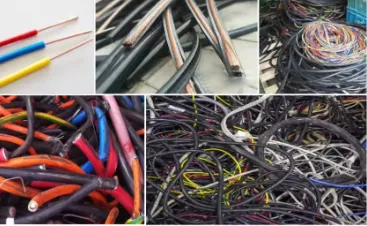

វិច្ឆិកា . 04, 2024 19:52 Back to list
Non-Ferrous Metal Separation An Essential Component of Recycling
The world is gradually moving towards a more sustainable and environmentally conscious way of living. One crucial aspect of this movement is recycling, particularly the recycling of metals. Within the recycling industry, the separation of non-ferrous metals plays a vital role in ensuring efficient recycling processes and maximizing material recovery. Non-ferrous metals, which include aluminum, copper, lead, zinc, and stainless steel, are distinguished from ferrous metals by their lack of iron content. This article discusses the importance of non-ferrous metal separation, the methods used for separation, and its impact on the recycling industry.
Importance of Non-Ferrous Metal Separation
Non-ferrous metals are highly valuable and possess properties that make them crucial for various applications, from construction to electronics. These metals usually have higher market values than ferrous metals due to their unique features, such as resistance to corrosion and lighter weight. Therefore, efficient separation of non-ferrous metals from other materials can yield significant economic benefits. Recycling non-ferrous metals not only conserves natural resources by reducing the need for mining but also decreases energy consumption and greenhouse gas emissions associated with metal production.
Furthermore, separating non-ferrous metals is essential for minimizing waste and enhancing the efficiency of recycling operations. By correctly sorting these metals, recycling facilities can ensure that the recovered materials are of high quality, which in turn enhances their reusability in manufacturing. When non-ferrous metals are intermingled with other materials, the quality of recycled products diminishes, leading to less profitable recycling processes and increased environmental impact.
Methods of Non-Ferrous Metal Separation
There are several effective methods used for separating non-ferrous metals from other materials. These techniques vary depending on the types of materials being processed and their specific characteristics.
1. Magnetic Separation Although non-ferrous metals are not magnetic, magnetic separators can be used to remove ferrous metals from mixed scrap. This step is critical because the removal of ferrous contamination can improve the quality of the non-ferrous metals to be sorted.

2. Eddy Current Separation This technique utilizes an eddy current separator, which generates a magnetic field that repels non-ferrous metals. As the material flows through the machine, the repelling force ejects non-ferrous metals from the stream, effectively separating them from non-metallic materials.
3. Air Classification This method employs air to separate lighter materials from heavier ones. Non-ferrous metals tend to be denser than many other materials, allowing them to be separated efficiently using controlled air flows.
4. Optical Sorting Advanced technology has enabled the development of optical sorting systems that use cameras and imaging software to identify and sort non-ferrous metals based on color and shape. This method is highly accurate and efficient, making it invaluable in modern recycling operations.
5. Hydraulic Separation This method involves using water and gravity to separate materials based on their density. Non-ferrous metals usually sink while other materials may float, allowing for effective separation.
Impact on the Recycling Industry
The separation of non-ferrous metals significantly impacts the recycling industry by improving material recovery and enhancing overall efficiency. As the global demand for sustainable practices increases, the ability to effectively recycle non-ferrous metals has become more critical than ever. Efficient metal separation not only supports the circular economy by allowing materials to be reused multiple times but also promotes environmental protection through waste reduction.
In conclusion, non-ferrous metal separation is a fundamental process in the recycling industry that offers numerous benefits, from economic gains to environmental sustainability. By employing innovative separation techniques, recycling facilities can enhance the quality of recovered materials, reduce waste, and contribute to a more sustainable future. As technology continues to evolve, improving the methods of non-ferrous metal separation will remain a priority, ensuring that we make the most of our valuable resources while protecting our planet.
Latest news
Troubleshooting Common Eddy Separator Problems
NewsJul.04,2025
The Role of Metal Recycling Plants in Circular Economy
NewsJul.04,2025
The Impact of Recycling Line Pickers on Waste Management Costs
NewsJul.04,2025
Safety Features Every Metal Shredder Should Have
NewsJul.04,2025
How Industrial Shredders Improve Waste Management Systems
NewsJul.04,2025
How Cable Granulators Contribute to Sustainable Recycling
NewsJul.04,2025